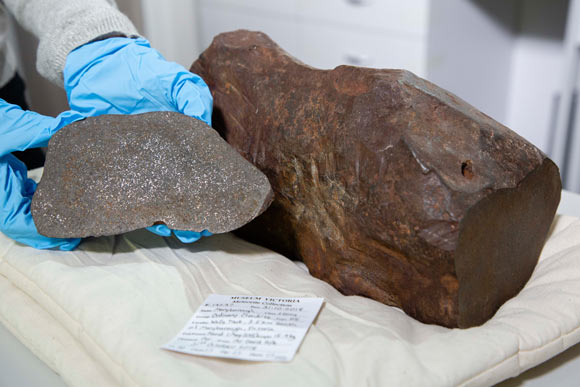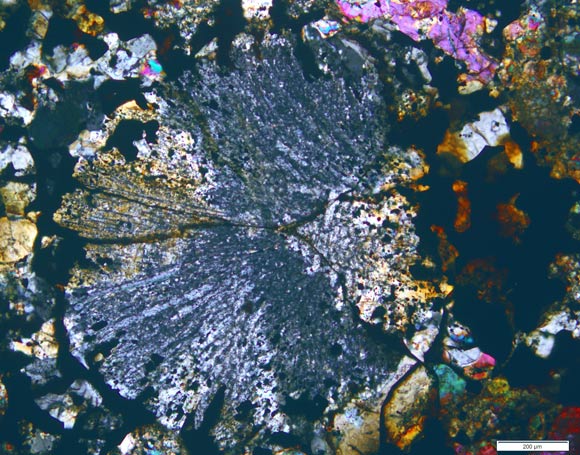A 17-kg chondrite meteorite that landed on Earth less than 1,000 years ago has been discovered by chance in the Australian state of Victoria.
In May 2015, gold prospector David Hole discovered a 17 kg single mass of a stony meteorite while fossicking for the precious metal, using a metal detector, in Maryborough Regional Park, Victoria. The meteorite was found on the surface, resting on a yellowish brown clay, in open box-ironbark forest.
In 2018, still curious, Hole brought the specimen to Museums Victoria for identification.
Geologists Bill Birch and Dermot Henry suspected almost immediately that this was a meteorite.
Following photography, molding and weighing, an analysis on a slice removed for research purposes confirmed that the meteorite is an H5 ordinary chondrite.
“The term chondrite means that this meteorite contains tiny crystallized droplets (chondrules), that formed by flash heating of the dust clouds of the early Solar System. It was most likely formed in the asteroid belt between Mars and Jupiter,” the researchers said.
Named the Maryborough meteorite, the object is elongated and has a distorted five-sided cross-section, with overall dimensions of 15.1 x 5.7 x 5.7 inches (38.5 x 14.5 x 14.5 cm).
All surfaces are colored reddish brown by a patina of iron oxides but there is no clear evidence for a fusion crust.
The meteorite has a density of 3.32 g/cm3. Its main metallic minerals are kamacite, taenite, tetrataenite and troilite, together constituting around 30% of the stone. All occur as irregular grains up to about 1 mm across.
“When you consider all the events this chunk of rock has experienced since its formation 4.6 billion years ago, it’s really mind-boggling that we get the opportunity to hold it and study it today. How good is that?” Dr. Birch said.
“Meteorites provide the cheapest form of space exploration. They transport us back in time, providing clues to the age, formation and chemistry of our Solar System (including the Earth),” Dr. Henry added.
“Some provide a glimpse at the deep interior of our planet. In some meteorites, there is ‘stardust’ even older than our Solar System, which shows us how stars form and evolve to create elements of the periodic table. Other rare meteorites contain organic molecules such as amino acids; the building blocks of life.”
While the team cannot confirm an exact date of landing, multiple meteor sightings in the Maryborough district were reported in local news between 1889 and 1951.
Carbon-14 dating revealed a terrestrial age of less than 1,000 years.
The full description of the Maryborough meteorite was published in the Proceedings of the Royal Society of Victoria.
_____
William D. Birch et al. 2019. Maryborough, a new H5 meteorite find from Victoria, Australia. Proceedings of the Royal Society of Victoria 131 (1): 18-23; doi: 10.1071/RS19002









